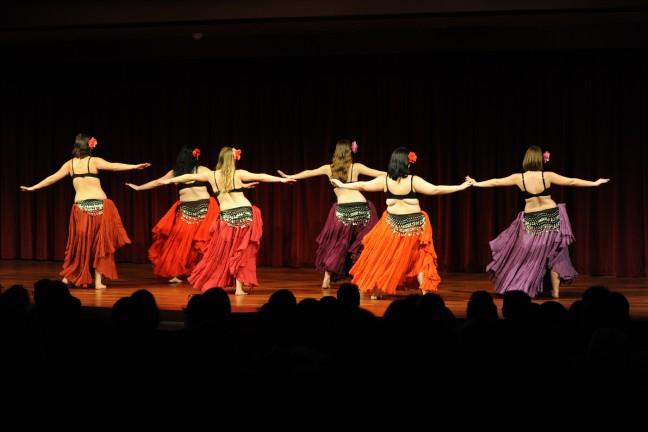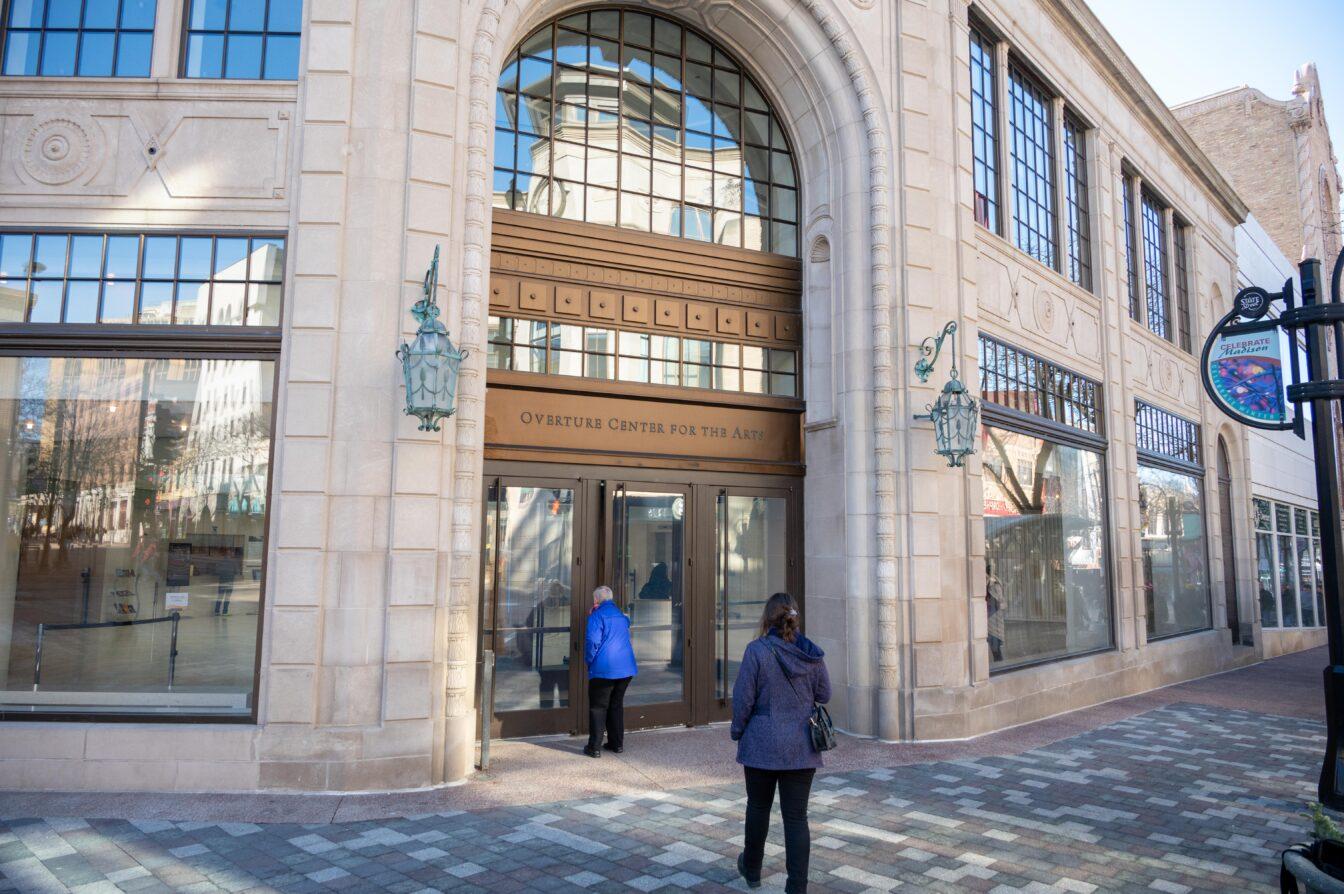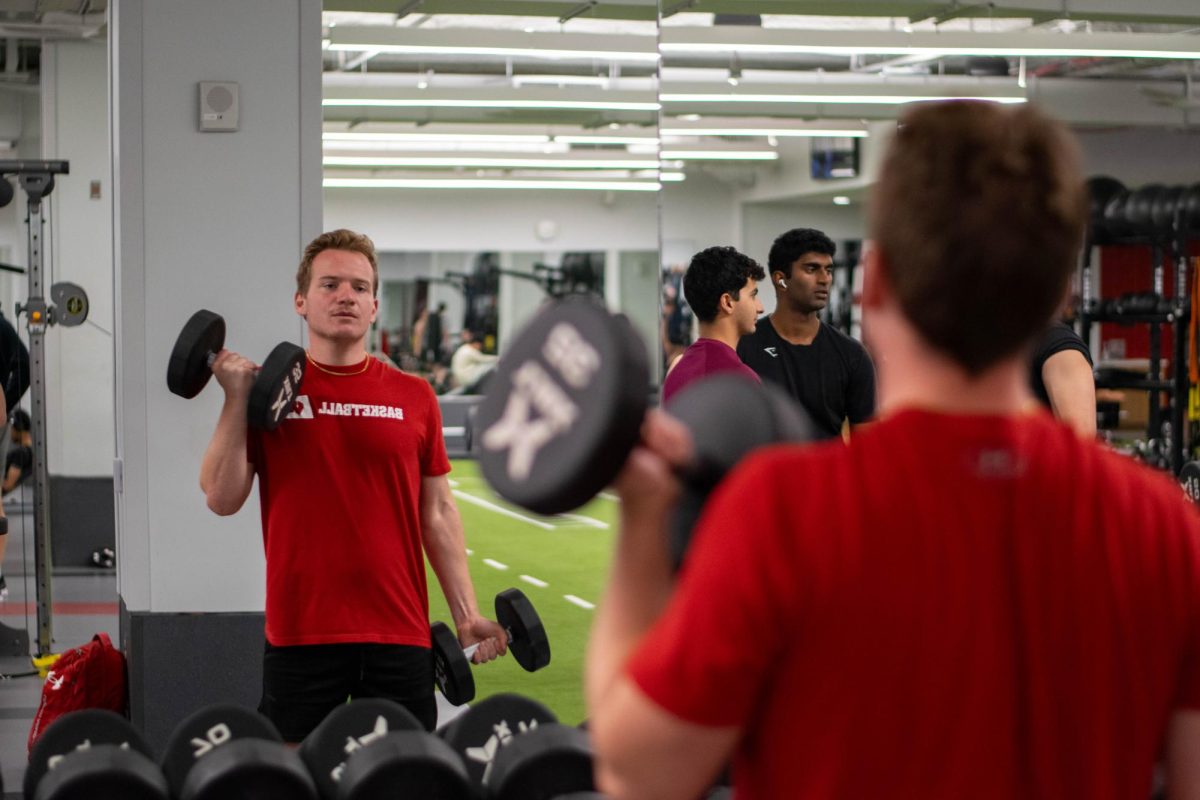For Audrey Jacobsen, University of Wisconsin’s belly dancing club has not just improved her dancing ability, it’s boosted her personal confidence as well.
“I think it’s kind of empowering to start off without knowing anything — maybe you’ve never danced before,” Jacobsen, the club’s president, said. “And at the end of the semester, you can do so many moves, you know some choreography. I think it makes you a lot more confident.”
Jacobsen pointed to the art form’s rich cultural history as a reason to get involved.
Jacobsen said the Romani brought the cultural tradition to Europe. From there, it spread and divided into distinct types of dance — Egyptian, Turkish, Oriental, American tribal and tribal fusion, she said.
Recognizing the different forms of movement and props that categorize these different areas of dance is integral to understanding belly dancing’s cultural significance, Jacobsen said. While the club has been active since 2010, Jacobsen said the club has been missing that understanding.
“Unfortunately, we’ve kind of lost the history of belly dance within the club,” Jacobsen said. “We’re trying this year to really start bringing [the history] back so people can appreciate more where it comes from.”
This missing understanding of history not only consists of belly dancing’s origins across the world, Jacobsen said, but also the music theory and history that has shaped the different categories of belly dance. The different instruments of different categories offer another source of cultural significance, making it a subject she said she would like the club to research more in the future.
Religion has also played a role in the history of the dance, particularly in how belly dancing has changed in style and the social effects it has had on its respective cultural community.
While Jacobsen is passionate about every aspect of bellydancing, she believes that the body positivity and acceptance that comes with it best promotes the art form.
Due to the stomach exposure, Jacobsen said it may be the only dance that does not outline an ideal body type for its practice.
“The belly dancing community in general is so accepting of people and body types and skill levels,” Jacobsen said. “I don’t experience or witness any judgment with that at all in the club. It’s really wonderful.”
Not only is the practice body positive, she said, but the belly dancing community as a whole is widely receptive of any level of dancing ability, creating a safe space to learn.
While Jacobsen stumbled upon belly dancing as a “happy accident” as a sophomore, she’s stuck with it and has integrated the club into her life as a student.
As a senior, Jacobsen will soon move on from UW, but she is thinking ahead for the club. Not only would she like to see the club immerse itself in the cultural and musical history of belly dance, but she wants to spread word that anyone can be a dancing candidate.
“In a perfect world, people wouldn’t look at belly dance and say ‘I can’t do that,’”Jacobsen said. “I think I would like to get more information about the club out there and have more people find out about it.”
The UW belly dancing club’s next performance will take place at the Monona Terrace April 23 at 8 p.m. UW students can purchase tickets for $10.








